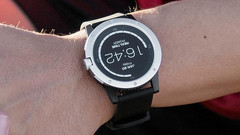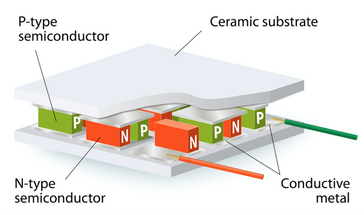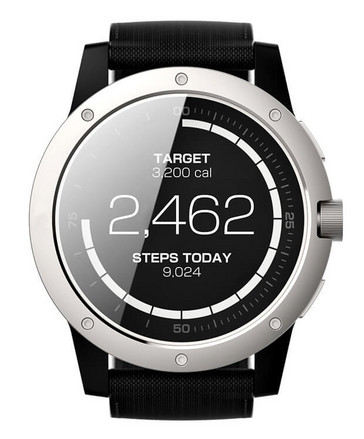Battery life is a constant hurdle for mobile electronics. The molehill becomes a mountain for wearable technology like smartwatches, as the devices must be small enough to be comfortable to wear while remaining powerful enough to perform useful tasks. But what would the wearable market be like if battery life wasn’t a concern? Matrix Industries hopes that their new PowerWatch can give us a glimpse into this future.
The PowerWatch is a low powered smartwatch that relies on the wearer's body heat to power the device through thermoelectric technology. The tech, which has been used by NASA to power the Curiosity rover on Mars, generates electrical current by conducting heat through tiny semiconductors. The bottom side of the watch will absorb heat from the user’s wrist; the heat will then pass to the cooler top side, generating current in the semiconductors within the device.
Due to the lower current generated by heat compared to a traditional battery, the PowerWatch won’t have the typical features found in today’s modern smartwatches. It won’t receive phone notifications or messages, like the Apple Watch and Android Wear devices can. However, users will be able to customize the monochromatic watch face and sync the watch’s data to their phones via Bluetooth, which will also automatically set the time on the watch. If the watch is taken off, it enters a low-energy “deep sleep” mode and runs off a small internal battery to keep the correct time. Once the watch is put back on the user’s wrist, it powers back up and resyncs to their phone.
Where the PowerWatch will really shine is fitness tracking. Most fitness trackers rely on an accelerometer or infrared heart rate monitor to measure motion in order to give an estimate of fitness metrics, such as calories burned or steps walked. These metrics, though, can be highly inaccurate and don’t give a very good picture of the wearer’s overall exercise routine. Since the PowerWatch is directly powered by the user’s body heat, it can accurately track how much heat the wearer’s body is generating and convert this heat output into actual calories burned. The watch has a meter on the display that shows how much electricity the wearer has generated, giving a fairly accurate idea of total calories burned.
The PowerWatch is the culmination of five years of research, design, and prototype manufacture. The device is made from aircraft-grade aluminum and is water resistant to 50 meters. It looks to be an interesting competitor to fitness trackers like Fitbit's Charge and Blaze wearable devices.
The PowerWatch started its Indiegogo crowdfunding campaign this morning, but as of 10:30 PM CST on November 14, the campaign had been fully funded at US $104,609 of its $100,000 goal. Potential buyers can "pre-order" the device by contributing $119 to the campaign. The PowerWatch is expected to be seen at CES in January and should ship to backers in July of 2017.





